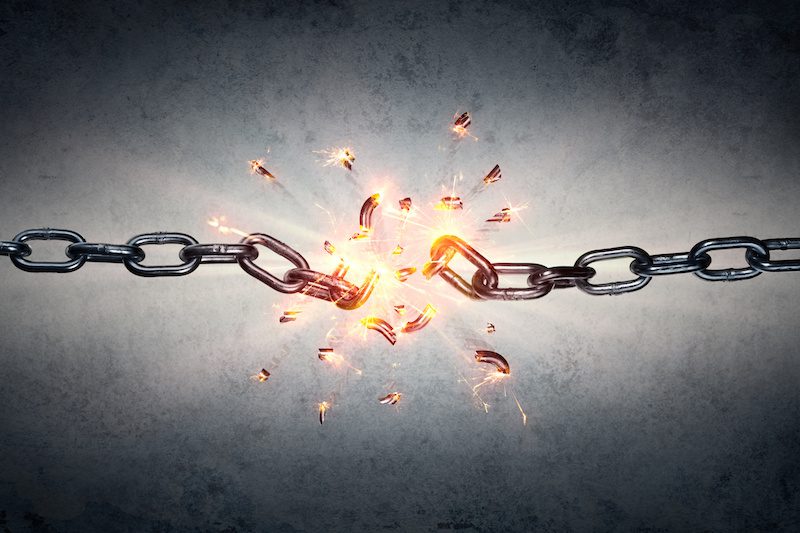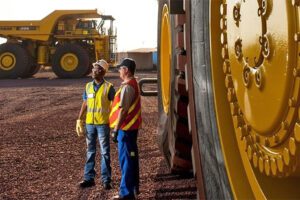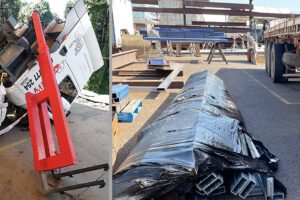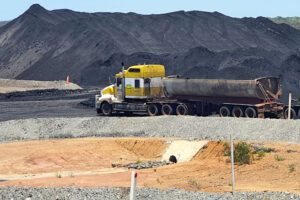A maintenance mineworker at a NSW coal mine has received a hard lesson in ensuring that correct load rated equipment for lifting and pulling equipment is applied after he broke a leg after a load point failure.
The NSW Resources Regulator reported that a worker, who was carrying out maintenance activities at the maingate of longwall 425, suffered a broken leg. The worker was using the shearer haulage to pull a flight bar when the rud link on the shearer failed, hitting the worker on the lower part of the leg.
The Regulator has recommended to the mining industry that when conducting any lifting or pulling work, operators must be able to identify correctly rated lifting components before carrying out the work. The total forces applied must be understood and all equipment must be rated accordingly.
The mine has been issued a Section 195 notice under the Work Health and Safety Act 2011 prohibiting this activity.
The incident is the subject of further investigation and additional circumstances may be identified by the regulator.
Reference NSWRR IncNot0033801
Load rated and lifting equipment processes and load ratings must be engineered and understood
Past load rated equipment incidents have demonstrated that incorrect loading of chains, slings and other lifting components can have significant consequences. An incident at a Gold mine in June last year resulted in a mineworker rushed to hospital unconscious after he was struck in the head by a chain.
In a Queensland mining-related incident 2009, a worker ended up with his toes amputated when a 360 kg suspended load fell after lifting lugs had been incorrectly welded to a cone crusher mantle.
The investigation at the time identified that the employee who fabricated the lifting lugs and welded them to the mantle had not read the section in the OEM operation and maintenance manual dealing with the procedure for fabricating and welding the lifting lugs. He had cut the lifting lugs from plate steel using oxy-cutting equipment and the lugs were not to the dimensions specified in the OEM operation and maintenance manual.
- The lifting lugs were not located on the mantle in the positions specified in the OEM operation and maintenance manual.
- Low hydrogen mild steel welding rods were used instead of the OEM recommended 310 stainless steel rods.
- The weld was not laid down according to the OEM operation and maintenance manual. There were multiple welding defects present, including deep undercuts and cracks, lack of penetration and fusion.
- The employee who welded the lifting lugs to the mantle had no welding competencies and was inexperienced in welding mild steel to manganese steel.
Lifting/load rating incident investigation likely to focus on multiple causal factors
Investigation of lug or chain load-related incidents may typically focus on several factors including:
- The loaded component/s compliance with standards;
- Whether the load ring or anchorage point was welded or bolted to the structure;
- The load applied (and the direction of applied load) during the activity;
- The load rating of the components used (typically components should be designed and tested to 4:1);
- Traceability of components used for loads;
- Other human factors that may have influenced the breakage or damage to components;
AMSJ notes that the term ‘rud’ link does not imply that the product is manufactured by RUD Australia and is a generic term used across the industry.
Standards for load rated equipment, lifting and rigging components
A range of standards should be considered when selecting components for lifting or rigging. AMSJ have provided a basic list below for mines to consider during lifting or rigging activities.
AS 1353 – Flat Synthetic Webbing Slings
AS 1380 – Fibre Rope Slings
AS 1418.2 – Cranes – Serial Hoists and Winches
AS 2317 – Collared Eyebolts
AS 1666 – Wire Rope Slings – Product Specification, Care and Use
AS 2550 – Cranes – Safe Use AS 2741 – Shackles
AS 2759 – Steel Wire Rope – Use, Operation and Maintenance
AS 3775 – Chain Slings – Grade T
AS 3777 – Shank Hooks and Large Eye Hooks – Maximum 60 tonnes
AS 4344 – Motor vehicles – Cargo restraint systems – Transport chain and components
AS 4380 – Motor vehicles – Cargo restraint systems – Transport webbing and components
AS 4497 – Roundslings – Synthetic Fibre – Product Specification, Care and Use
Read more Mining Safety News














Add Comment